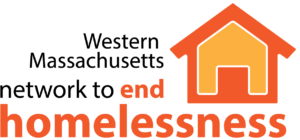HUD’s Ann Oliva, Director of the Office of Special Needs Assistance Programs, sent this message out today about youth homelessness:
This is one of the most important In Focus messages I think I will send out this year – on a topic that is both critical to our progress on ending homelessness and one that touches most of us on a deeply personal level. That makes for passionate discussion and action on the topic. Hopefully this message helps to clarify where we are and what we are doing on youth homelessness as we look towards the goal of ending the disgrace of youth homelessness by 2020.
As a nation, we should be doing much more to end youth homelessness. Youth have unique developmental needs and our approach to youth homelessness has to do a better job taking these into account. Here at HUD, we are working with our federal partners to improve the federal response to youth homelessness, but we still have much more work to do. I want to take a moment to address some specific questions and concerns we have received and highlight some of our efforts to end youth homelessness.
One of the challenges that we face is that we lack sufficient research and data to help us make more informed decisions about what works to end youth homelessness. We know that the strategies that work for chronic and veteran’s homelessness are not always the right strategies for youth, but we need better data to craft youth-specific strategies. HUD requires communities to include youth experiencing homelessness in their point-in-time counts, and we are strongly encouraging communities to improve their outreach to ensure that all youth are counted and that programs serving youth are entering data into HMIS. HUD has published the PIT Count Methodology Guide to assist communities in conducting their PIT counts. It includes promising approaches drawn from Youth Count! describing how communities may more effectively count youth as part of the PIT count. We are looking at many sources of data, including information from the Department of Education’s homelessness programs and other research on youth experiencing or at risk of homelessness. We are also analyzing the responses from the CoC Application about current efforts to address homelessness for unaccompanied youth. Your responses provide us with useful information about practices in the field. Although gathering data on youth can be challenging, that information is crucial if we are to make progress on ending youth homelessness.
We often hear from youth providers and advocates that they are concerned that our focus on performance will hurt youth programs. These concerns take two forms. First, because achieving positive outcomes for youth is often more complex and challenging, they are concerned that performance measures will discourage communities from funding youth programs. We are paying close attention to this issue. HUD recently published the System Performance Measures Introductory Guide, a guide that describes our new system performance measures. The key difference between these system performance measures and traditional performance measures is that the system performance measures capture outcomes for all homeless people in the CoC’s geographic area regardless of whether they are served by CoC-funded programs. This is crucial, because it means that CoCs cannot improve their performance by simply failing to serve people for whom it is harder to achieve positive outcomes. For example, if a CoC chooses not to fund a youth program, the youth that would have been served by that program will still be included in the CoC’s system performance measures. If the outcomes for those youth decline because there are fewer programs to serve them, the CoC’s overall performance will decline. As we develop our measures and the incentives that will accompany them, we are taking great care to ensure that, if anything, we create incentives to provide more assistance to people, like unaccompanied youth, who have greater challenges to exiting homelessness and maintaining safe and stable housing.
Another concern people have raised about our performance measures is that while permanent housing outcomes are appropriate for adults, they don’t always make sense for youth. This is an area we and our federal partners are studying closely. There are likely circumstances where quickly moving youth directly into their own permanent housing is not the most appropriate goal. We are working on identifying when this is the case and how to craft incentives that take these circumstances into account.
The most concerning and persistent questions we get are about eligibility of young people experiencing homelessness for our CoC and ESG funded programs. To clear up confusion, we are publishing more information, including this overview about eligibility for HUD’s homeless assistance programs. I want to be clear – nobody, including youth, should ever have to sleep in an unsheltered location or in a place where they are being abused or trafficked or fearful of abuse. Any youth facing those circumstances should be able to access emergency shelter, and the documentation required for them to do so should be straightforward and place as little burden on youth as possible.
Unfortunately, youth and many other individuals and families are unable to access emergency shelter and other homeless assistance because there is not nearly enough assistance available and providers have to make heartbreaking decisions about how they use their resources. When resources are scarce as they almost always are, we encourage communities to ensure that they prioritize assistance for people with the greatest needs and at the greatest risk of harm.
HUD is also working on several youth initiatives that I briefly wanted to mention:
- A two-city pilot to help communities develop and implement a comprehensive community-wide plan to prevent homelessness among LGBT youth,
- Integrating Runaway and Homeless Youth program data with HUD’s Homeless Management Information Systems,
- Guidance for CoCs and Local Education Agencies about models of collaboration,
- A HUD definition and program eligibility crosswalk for local education and homeless service partners,
- Coordinating the federal response to youth homelessness through interagency working groups,
- Facilitating the adoption and Implementation of the U.S. Interagency Council on Homelessness’s Framework to End Youth Homelessnessthrough interagency partnerships, pilot projects, technical assistance, and training, and
- Improving the capacity of existing program applications and reporting forms to capture important youth characteristics including age and relevant descriptions of household types.
We are fully committed to ending family and youth homelessness by 2020, and we will continue to search for the right strategies that will ensure we reach our goals. To better keep you informed about our direction and progress, we will be publishing more messages about a variety of youth topics. As always I want to thank all of our partners and especially our homeless assistance provider community for your tireless efforts to serve people experiencing homelessness. You do awesome work.
Ann Marie Oliva
Deputy Assistant Secretary for Special Needs
Acting Director, Office of Special Needs Assistance Programs

